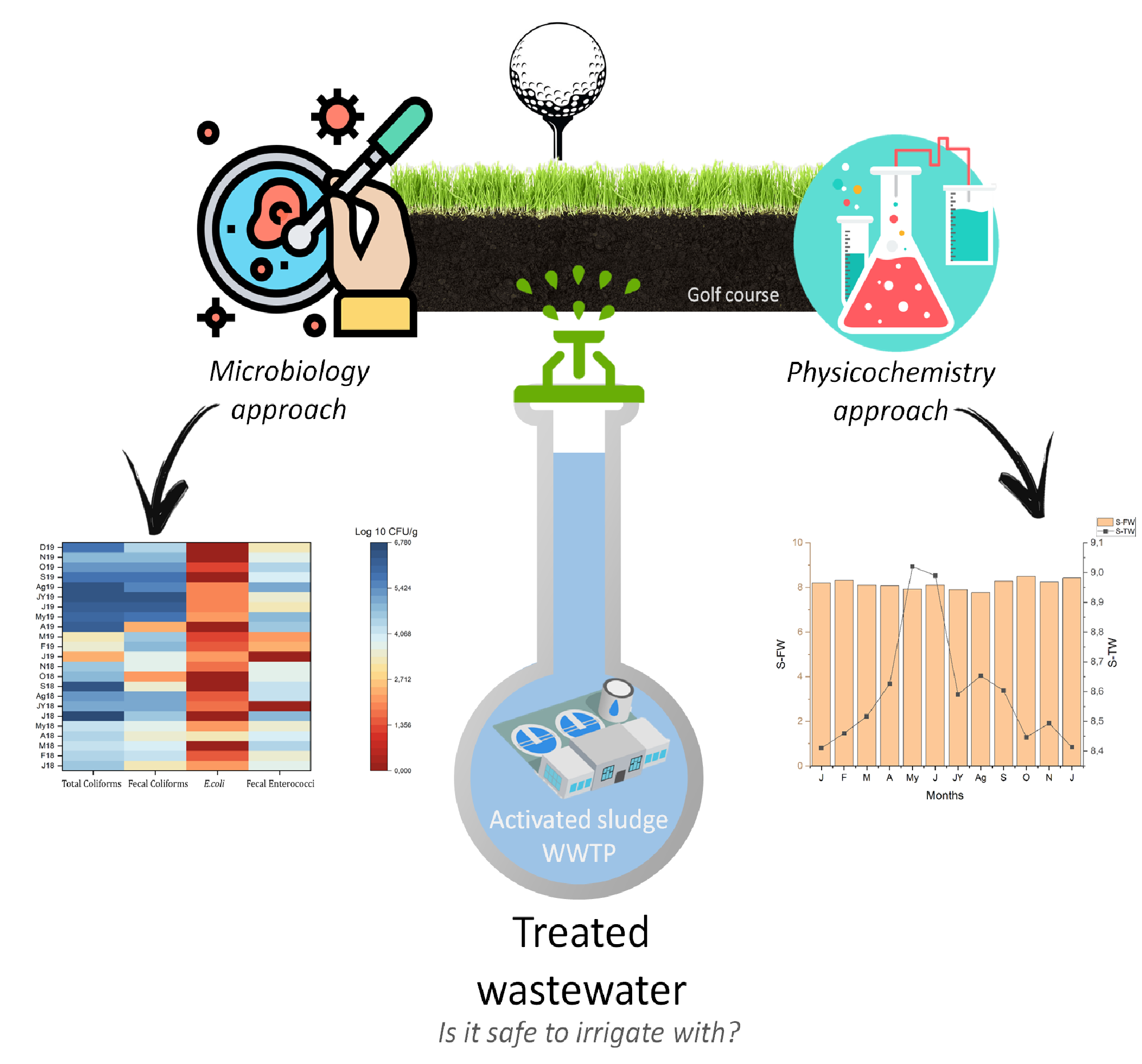
This research describes the bacteriological and physicochemical impact of two types of irrigation water on soil and turfgrass quality during 2018 and 2019. Wastewater treated by an activated sludge process coupled with UV disinfection UV-TW was compared to fresh water FW. The first cycle (2018) was devoted to monitoring soil and turfgrass irrigated by FW, and the second cycle (2019) for UV-TW. Our results showed that the mean concentration of fecal indicators of treated wastewater UV-TW is about 2.17, 1.74, 1.77, and 1.52 log10 CFU/100ml for total coliforms, fecal coliforms, E. coli and cecal enterococci, respectively. The physicochemical characteristics showed no significant difference between soil irrigated with UV-TW and soil irrigated with FW except for pH and electrical conductivity. No significant difference was recorded comparing the fecal contamination of soil and turfgrass between the two irrigation cycles, except for fecal coliforms. Overall, the outputs of this work reported that the irrigation with UV-TW presents advantages not only on the quality of the soil and the vegetation, but also on the management of water scarcity. Thus, a highly controlled process of treatment and irrigation must be conducted to assure a safe hydric resource and to avoid any potential risk to human health.
Total file downloads: 4